Could Harris Take Florida and North Carolina? The Data Suggests She Can.
If Harris’s support among Black voters continues to consolidate as it has over the past two months, then she stands a very strong chance of winning both states.
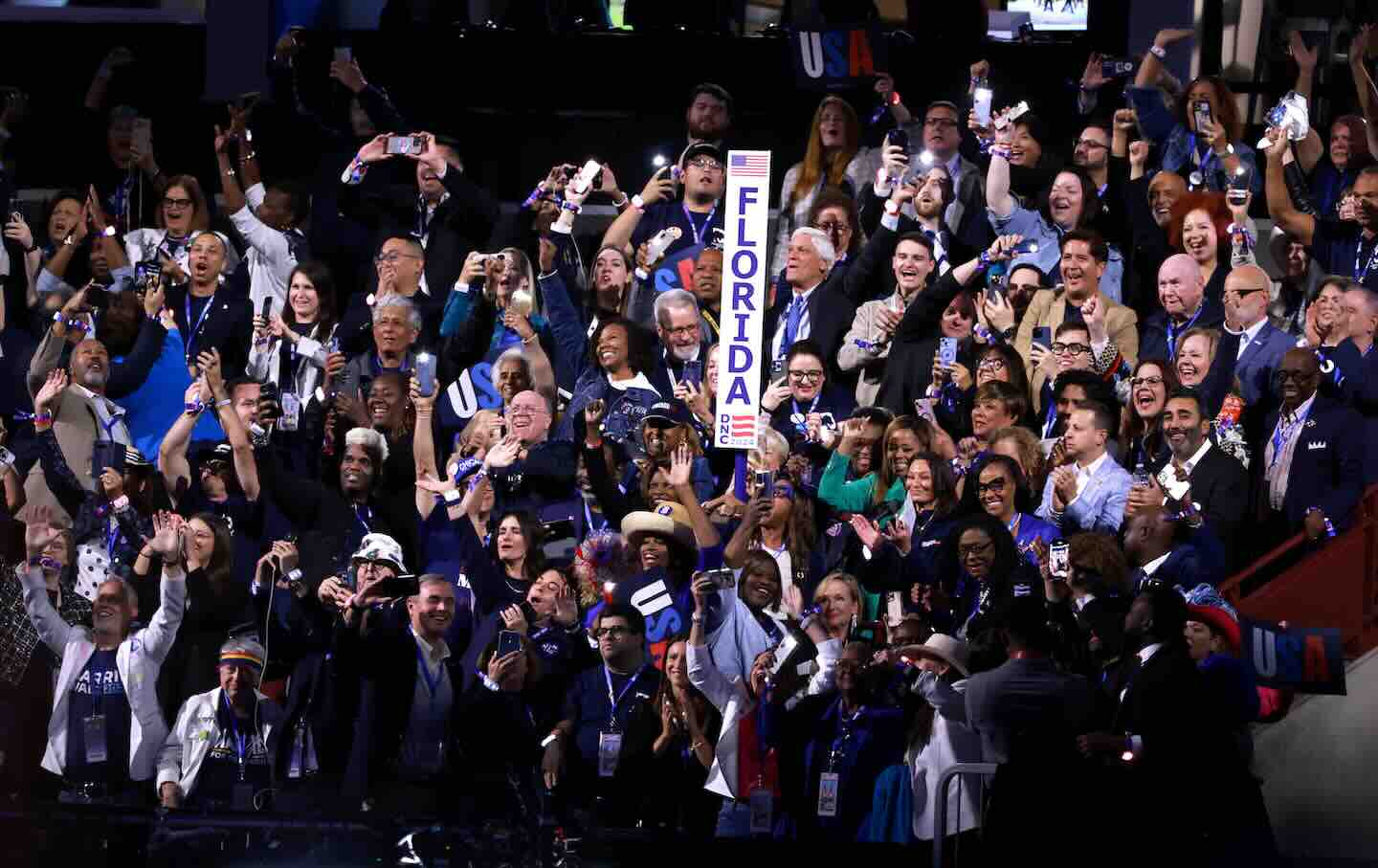
Members of the Florida delegation cast their votes on the second day of the Democratic National Convention at the United Center on August 20 in Chicago, Illinois.
(Joe Raedle / Getty Images)
With fewer than 50 days left until the presidential election, two key states are now in play: Florida and North Carolina. In fact, Kamala Harris’s historic candidacy has galvanized voters across the political spectrum to such an extent that nearly every state Barack Obama won in 2012 is within reach and winnable by Harris. But, surprisingly, you won’t see much mention of this critical development on the electoral landscape.
Most of those in the media don’t properly appreciate the underlying trends and dynamics of this election because of their stubborn insistence on ignoring what is the most determinative set of relevant data that exists—the differences in political preferences of our country’s respective racial groups. Since the advent of modern-day exit polling in 1976, the starkest difference among subsets of the nation’s population can be seen in the voting choices of Black and white voters. Over the past 44 years, no Democratic nominee for president has ever received less than 83 percent of the Black vote, according to exit polls, and the majority of white voters have always sided with the Republican nominee (Jimmy Carter is the Democrat who has come the closest to winning the white vote, securing 48 percent of it in 1976).
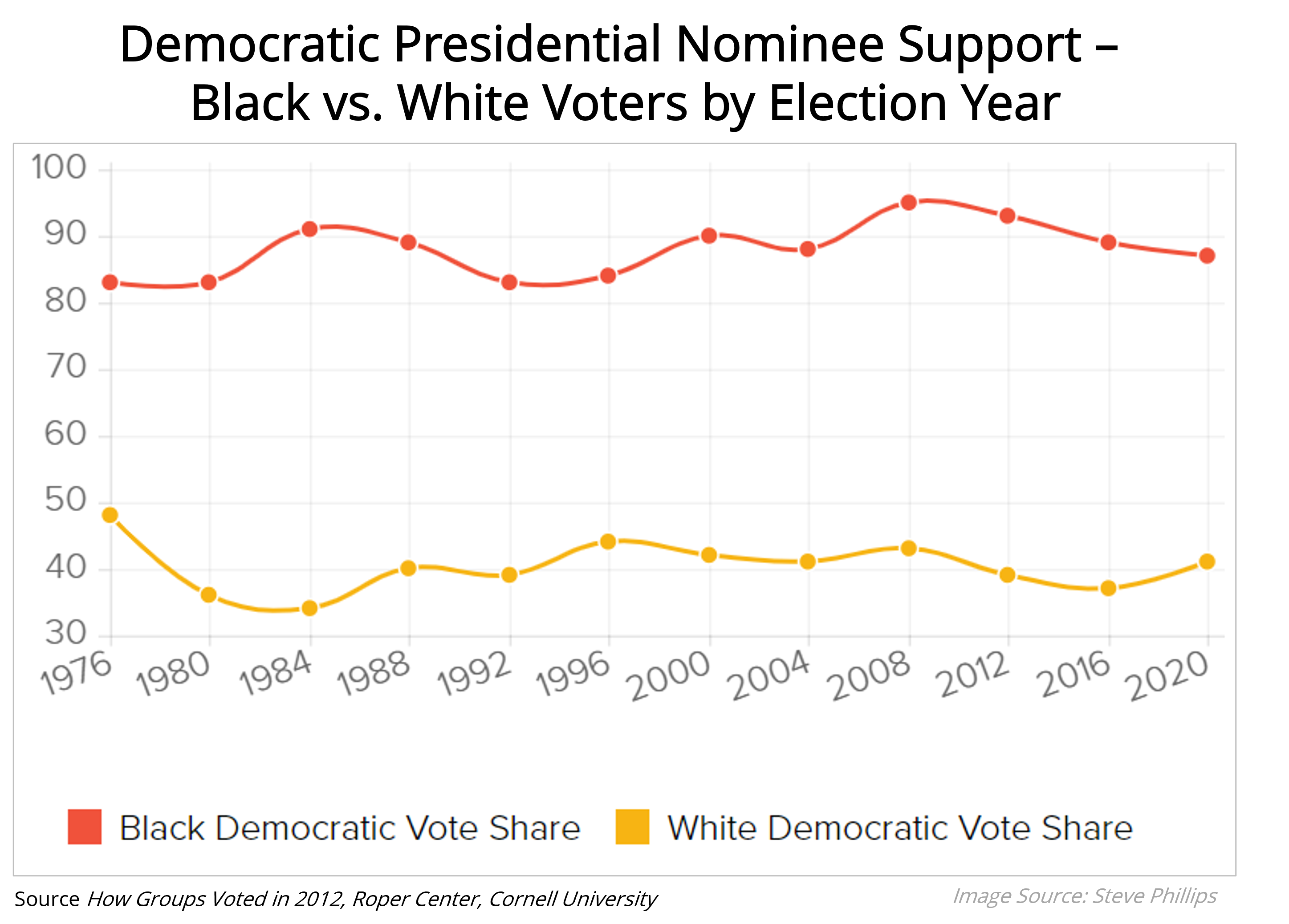
To address this gap in the political analytical landscape, I worked with data scientist Dr. Julie Martinez Ortega two years ago to develop the New Majority Index (NMI), the only election resource that incorporates historical election data, polling results, and racial demographic data from the US Census. When elections are viewed through this lens, a clearer picture emerges of what’s happening, and what’s possible. For example, I wrote in 2022 how the NMI indicated that there were far more competitive House seats in play than most pundits believed in a year when nearly everyone was prognosticating a “red wave” of Republican House pickups. As the NMI suggested, that red wave never materialized, resulting in a mere pink puddle of just a handful of seats changing parties instead of the dozens that most were forecasting.
I’ve updated and expanded the NMI model this election cycle to incorporate electoral and demographic data from presidential elections, in addition to congressional contests. In particular, I have added pertinent data points from the 2012 election—the last time there was a Black presidential nominee. Viewed through this prism, the 2024 map of competitive states is far larger than most in the media realize.
As was the case with Obama’s candidacy, Harris has electrified the electorate, causing a surge of enthusiasm and excitement across the country, especially galvanizing people of color, and women of color in particular, who have demonstrated their excitement about the prospect of sending someone of their background and life experience to the White House.
The tidal wave of support began the very day Joe Biden withdrew from the race. On Sunday, July 21, more than 44,000 Black women joined a Zoom call to strategize and coordinate their efforts, raising $1.6 million in a matter of hours. That combination of technological and demographic revolutions was repeated throughout the week as hundreds of thousands people joined similar Zoom calls organized by and for Black men, Latinos, Asian Americans, white women, and even “White Dudes for Harris.” By the end of the week, the entire electoral landscape had been transformed, and Harris’s position at the top of the ticket was secured.
The enthusiasm continued to manifest as Harris shattered fundraising records, bringing in $200 million in the first week of her campaign, a fundraising haul unmatched in the history of US politics. Almost immediately, the polls began to tighten, as previously divided Democrats (those who wanted Biden to stay in, those who wanted Harris instead, and those who wanted someone else entirely) consolidated their support behind the Harris-Walz ticket. Notably, that excitement promptly brought back into play relatively more recent “purple” battleground states such as Georgia and Arizona. In the first week of her candidacy, Harris traveled to Georgia, attracting the largest crowd of the campaign cycle in the Peach State as more than 10,000 people packed the arena.
While much of the mainstream media has recognized that the full 2020 set of states are currently competitive, what most still don’t see is that Harris’s candidacy has brought back into play not just the 2020 states but also the 2012 states. The levels of excitement and energy among voters of color now make nearly all of the states won by Obama newly winnable by Democrats.
This rapidly emerging reality is affirmed by the New Majority Index and the latest polling data. The “Obama coalition”—what I call in my books “the New American Majority”—consists of the overwhelming majority of people of color aligning with a meaningful minority of white voters. The Democrats’ “formula” for victory involves combining the necessary proportions of support from the country’s respective racial groups.

Two dominant realities combine to illuminate the potential of Florida and North Carolina—Harris’s current polling numbers among white voters and the lag in support from Black voters showing up in the polling data (that is, most polls are failing to capture the depth and breadth of Black voters’ support for Harris).
In Florida in 2012, Obama won the state with the support of just 37 percent of the state’s white voters. In North Carolina in 2008 (the year Obama won the state, before narrowly losing it in 2012), his white support was only 35 percent, according to the exit polls. The most recent polling data show Harris doing better among white voters than Obama did in Florida and North Carolina (39 percent in Florida and 37 percent in North Carolina, according to the latest polls).
In both states, despite increasing demographic diversity, white voters remain the largest sector of the electorate (59 percent of the eligible voters in Florida and 65 percent in North Carolina), so Harris’s surpassing Obama’s levels is extremely significant.
What makes the electoral map look particularly promising for Harris is the reality that polls are undercounting Harris’s Black support. That is, there is a lag between what they currently show in terms of Black voter preferences and what her support is most likely to be.
This lag is most pronounced in the latest New York Times/Siena College poll which shows Harris’s support among Black voters at just 75 percent. No Democratic nominee has ever received less than 83 percent of the Black vote, so it’s nonsensical to accept a number like 75 percent as accurate of what Harris’s ultimate 2024 numbers will be. The qualitative and quantitative tea leaves all suggest that Harris will win more than 90 percent of the Black vote. According to Pew Research’s rigorous statistical analysis, the Biden/Harris 2020 ticket received 92 percent percent of the Black vote. In the prior historical analog, Obama received 93 percent of the Black vote nationally, winning 95 percent of Black voters’ support in Florida and North Carolina.
If Harris’s support among Black voters continues to consolidate as it has over the past two months, then she stands a very strong chance of winning both states. In Florida, the critical constituency will be Latinos, and she needs to secure 60 percent of that community’s votes to prevail. The latest polls show just 50 percent of Latinos backing Harris, but that number is likely low and lagging, as the September Pew survey shows that, nationally, 57 percent of Latinos back Harris.
In North Carolina, YouGov’s August poll shows Harris meeting the Obama threshold of white support, but the number for Black voters is clearly incorrect at 75 percent. If the 37 percent of white voters’ support holds, and the percentage of Black voters moves to the Obama level of 95 percent, then she will win that state. To be sure, in those states—and, indeed all states with large numbers of people of color—a major challenge will be overcoming the widespread voter-suppression measures that have proliferated in recent years.
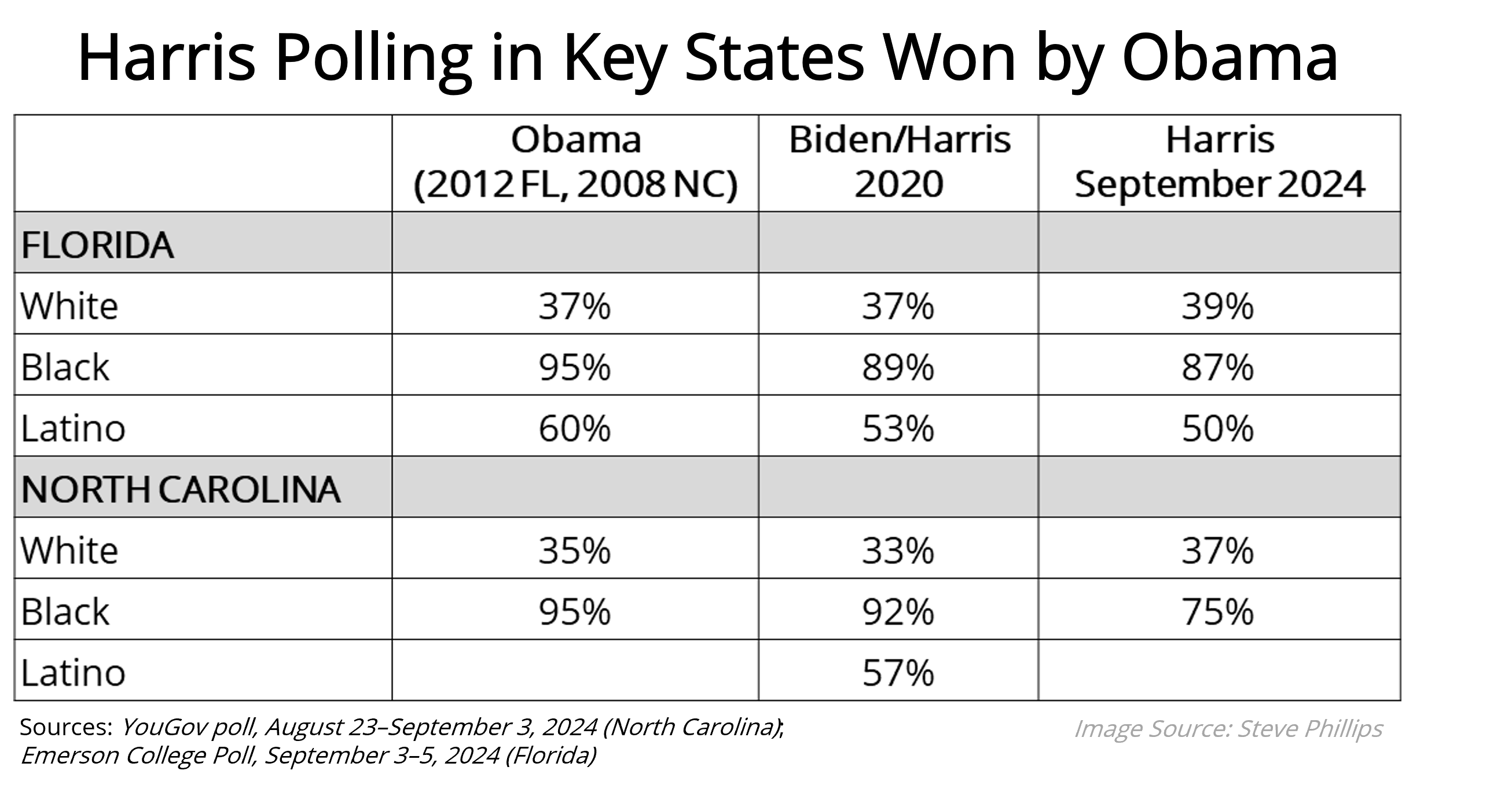
Something profound, historic, and transformative is sweeping the nation. You see it in the faces of the people attending Harris rallies, the astounding number of dollars pouring into her campaign coffers, and the surge in voter registration and volunteers since she took control of the ticket. A race-conscious approach to analyzing the underlying data both affirms the significance of what is bubbling up across the country and points to the very real possibility that the electoral map is much larger than people realize. The entire set of Obama-won states is in play, and Kamala Harris could win even more states than many realize, including North Carolina and Florida.
More from The Nation
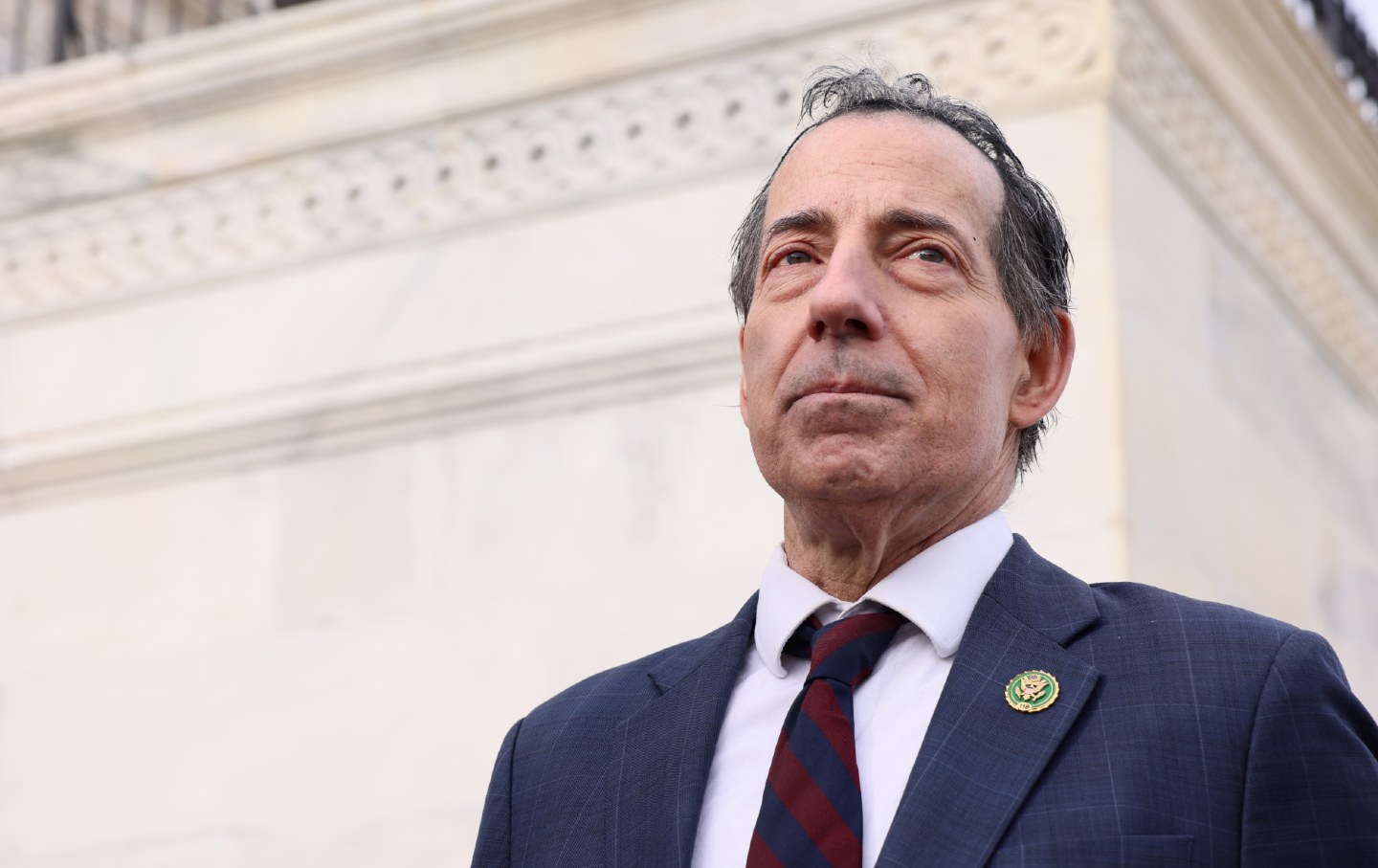
How Democrats Can Fight Back How Democrats Can Fight Back
Jamie Raskin lays out the legal strategy to oppose Trump but says, “We’re not going to sue our way out of a political crisis”—Democrats need a political organizing strategy.

Donald Trump Is Stealing the Kennedy Brand Donald Trump Is Stealing the Kennedy Brand
Does the Kennedy name stand for liberalism—or oligarchy?

A Profoundly Un-American Moment A Profoundly Un-American Moment
Trump and his enablers have launched an unprecedented assault on American society and values.
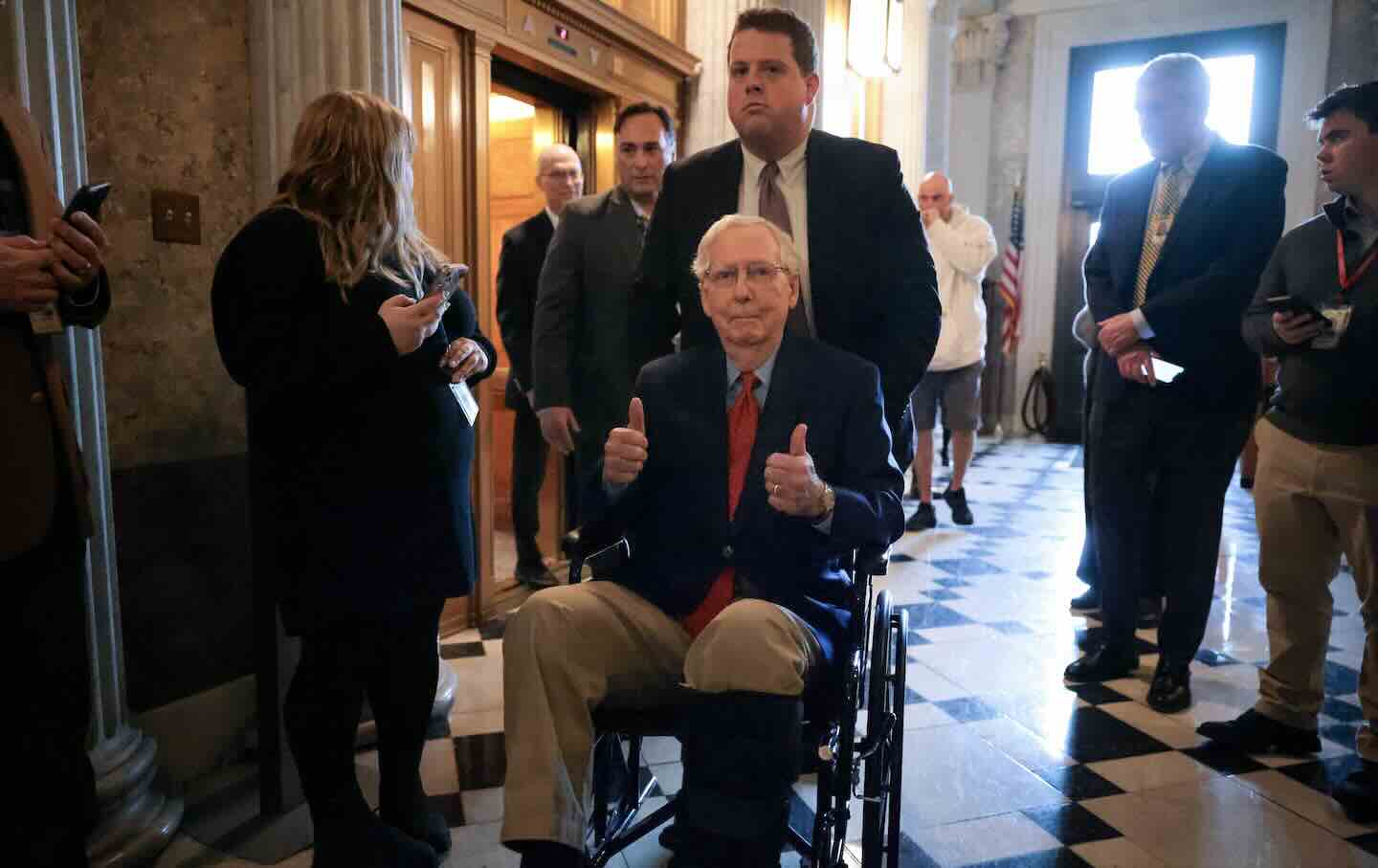
Mitch McConnell’s Desperate Bid for an Honorable Political Legacy Mitch McConnell’s Desperate Bid for an Honorable Political Legacy
Lately McConnell has been a rare GOP vote against Trump’s worst cabinet nominees. But he’s the main reason Trump is back in power.




